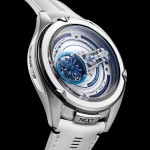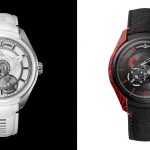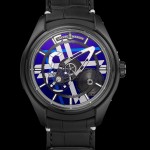Best of Both Worlds: Ulysse Nardin x Urwerk UR-Freak
The Freak’s revolving movement meets Urwerk’s satellite display.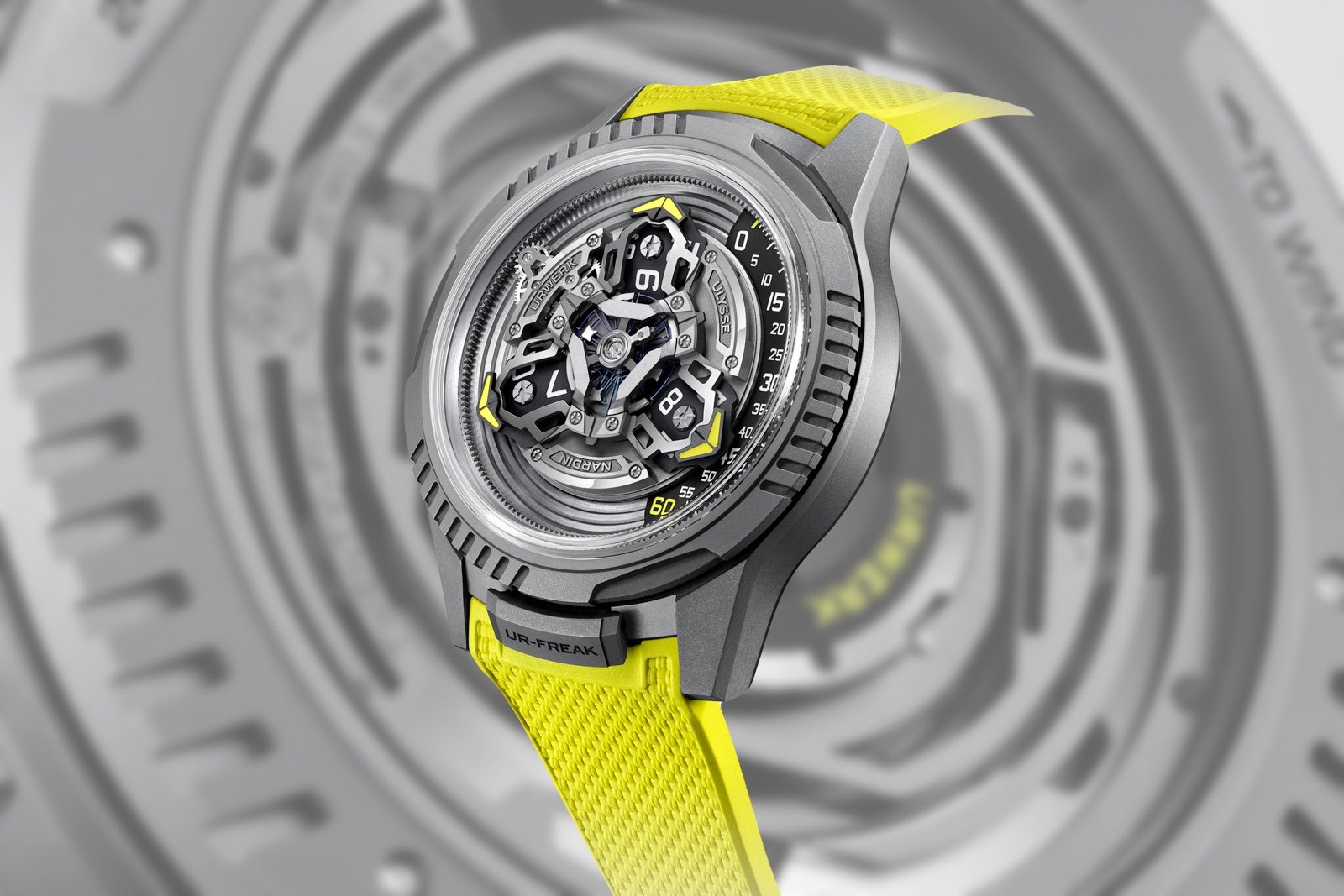
The Ulysse Nardin UR-Freak brings together two of contemporary watchmaking’s most inventive forces. A collaboration between Ulysse Nardin and Urwerk, it merges the Freak’s revolving-movement architecture with Urwerk’s signature wandering hours display to create something that feels both inevitable and extraordinary. The partnership amplifies the strengths of each brand: Ulysse Nardin’s mastery of silicon technology and mechanical architecture, and Urwerk’s futuristic approach to time display.
More than a meeting of aesthetics, the UR-Freak unites two brands that have long challenged convention. Both rose to prominence around the turn of the millennium by rewriting mechanical rules—Ulysse Nardin with its revolutionary 2001 Freak, and Urwerk with its satellite-hour timepieces that reimagined a traditional complication. Two decades later, their paths converge with a 100-piece limited edition in sandblasted titanium.
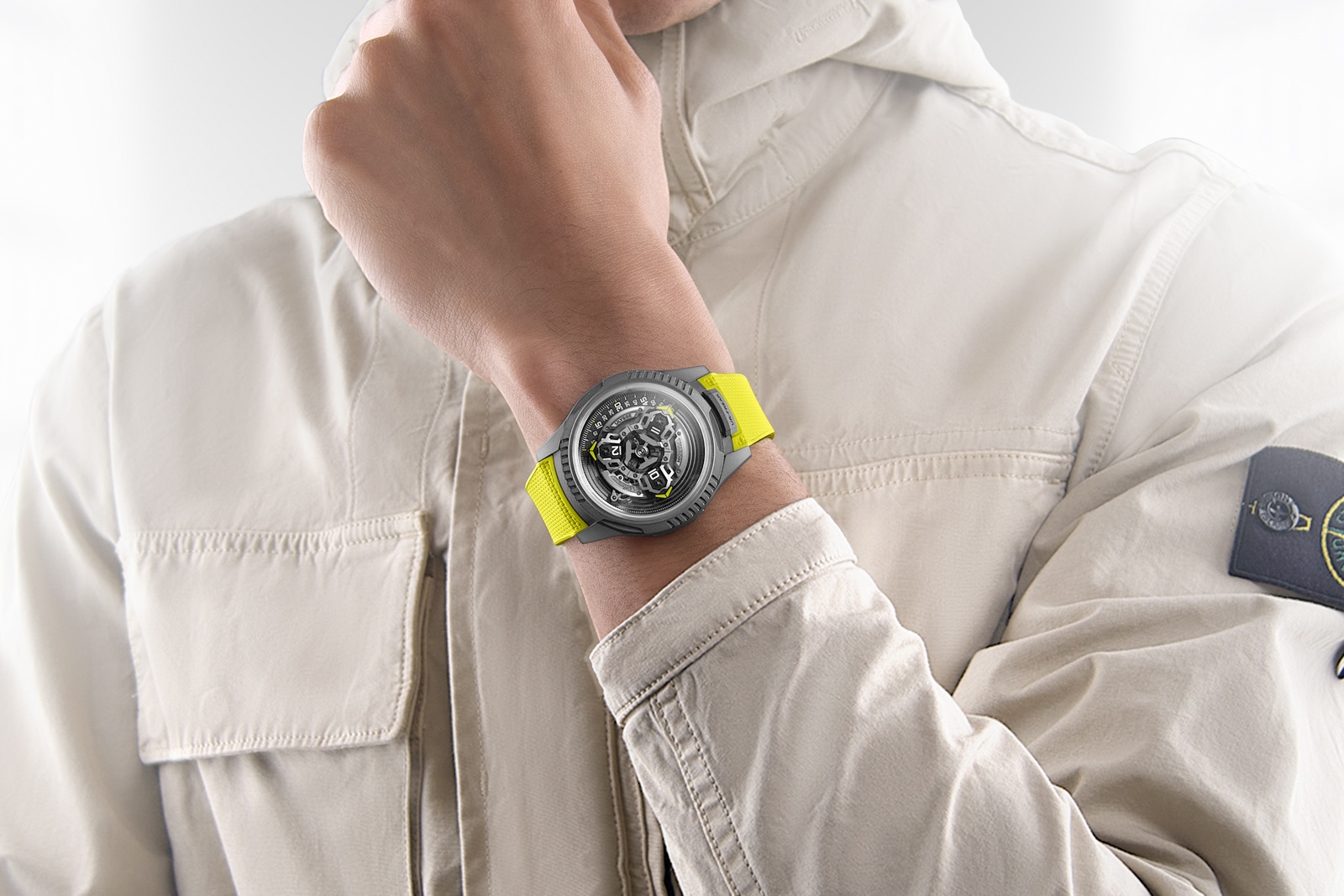
Initial thoughts
Some collaborations seem obvious in hindsight; the Ulysse Nardin UR-Freak is one of them. The collaboration plays to the strengths of both brands, with Urwerk’s signature wandering hours display plugging seamlessly into the UN Freak architecture.
It turns out that Urwerk’s signature satellite wandering hours display feels right at home grafted onto Uylsse Nardin’s flagship. Frankly, they could have left it at that and called it a day. But the fact is Ulysse Nardin went the extra step to reimagine the Freak’s signature flying tourbillon in order to fully integrate it into the Urwerk display carriage, which makes one full turn every three hours. What was once a simple time display complication has been transformed into a functional part of the regulator itself.

The alignment extends beyond the aesthetic, bringing together two brands known for their rebellious approach to watchmaking. It’s surprising, though perhaps it shouldn’t be, that the the UR-Freak one of the most compelling products from either brand.
The experiences of Ulysse Nardin and Urwerk at the dawn of the new millennium prove that life is never easy for those who break with the status quo. A quarter century later, modern collectors owe a debt of gratitude to both the innovative minds that conceived these products, and the forward-thinking retailers and collectors who created a market for them.
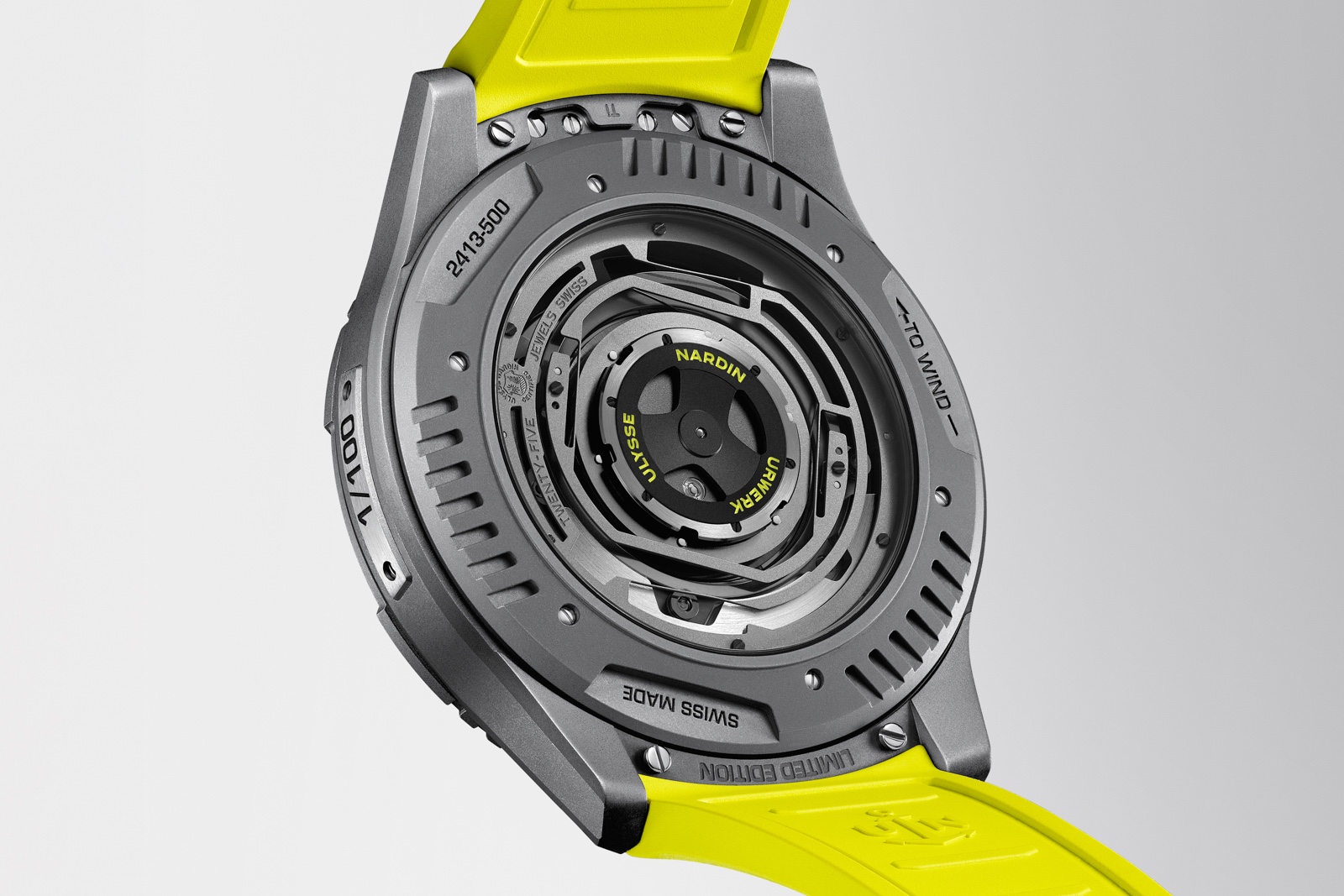
The Freak is a foundational watch in the pantheon of contemporary watchmaking, and this distinctiveness helps define the value proposition. The participation of Urwerk adds to the appeal, lending it some of the smaller brand’s inimitable cachet. Conceptually and substantively, the retail price of CHF100,000 seems appropriate.

Innovators unite
To understand the Freak, it’s worth looking back at the watchmaking landscape as things stood at end of the 1990s. At the time, the most groundbreaking and innovative products were watches like the A. Lange & Söhne Datograph and the F.P. Journe Tourbillon Souverain, which were groundbreaking in terms of mechanical ambition, but remained largely traditional in terms of design and materials.
Against this backdrop, Urwerk debuted in 1997 with the UR-101, which reimagined the traditional wandering hours display in a pebble-like flying saucer of a watch. But the UR-101 largely flew under the radar, being a niche product from an upstart brand that had not yet had a chance to demonstrate staying power.

A more recent Urwerk (left) next to an early UR-103.
A few years later, in 2001, Ulysse Nardin changed everything by launching the Freak, which was revolutionary both in design and construction. The origin story of the Freak also begins in 1997, when a young Carole Forestier-Kasapi came up with the idea for a rotating movement. Fresh out of technical college, Ms Forestier-Kasapi joined Ulysse Nardin where the brand’s technical director, Dr Ludwig Oechslin, helped bring her ideas to life, while contributing a healthy dose of his own rare genius.
There are two big reasons why the launch of the Freak was such a watershed moment for the industry. The first was its structural design, which packaged the bulk of the movement, including the going train and escapement, into a rotating 60-minute tourbillon that functioned as the minutes hand. Today, we throw around terms like ‘revolutionary’ pretty liberally, but few designs come close to the sheer audacity of the Freak.
 As if the design was not significant enough, the Freak was the first watch to incorporate silicon components, and in fact featured an exotic full-silicon double wheel direct impulse escapement. Though the use of silicon is now widespread, used by the biggest names in the industry like Rolex and Patek Philippe, Ulysse Nardin was the first mover, with Dr Oechslin the mind behind it.
As if the design was not significant enough, the Freak was the first watch to incorporate silicon components, and in fact featured an exotic full-silicon double wheel direct impulse escapement. Though the use of silicon is now widespread, used by the biggest names in the industry like Rolex and Patek Philippe, Ulysse Nardin was the first mover, with Dr Oechslin the mind behind it.
The launch of the Freak was a kind of ‘before and after’ type of moment; the industry was never the same after its debut. But it wasn’t all smooth sailing. The novel Dual Direct escapement proved unreliable, and was later supplanted by the Dual Ulysse escapement in 2005, which offered revised geometry and an indirect impulse. Urwerk also struggled to gain traction in those first few years, but the tenacity of founders Felix Baumgartner and Martin Frei led to the 2003 introduction of the UR-103, which introduced the design language we recognise today and helped the brand earn the acclaimed position it now occupies.
The brands’ shared history illustrates why this collaboration makes so much sense. It goes beyond the sci-fi aesthetic to unite two brands that have consistently demonstrated a willingness to do their own thing, and have the battle scars to prove it.
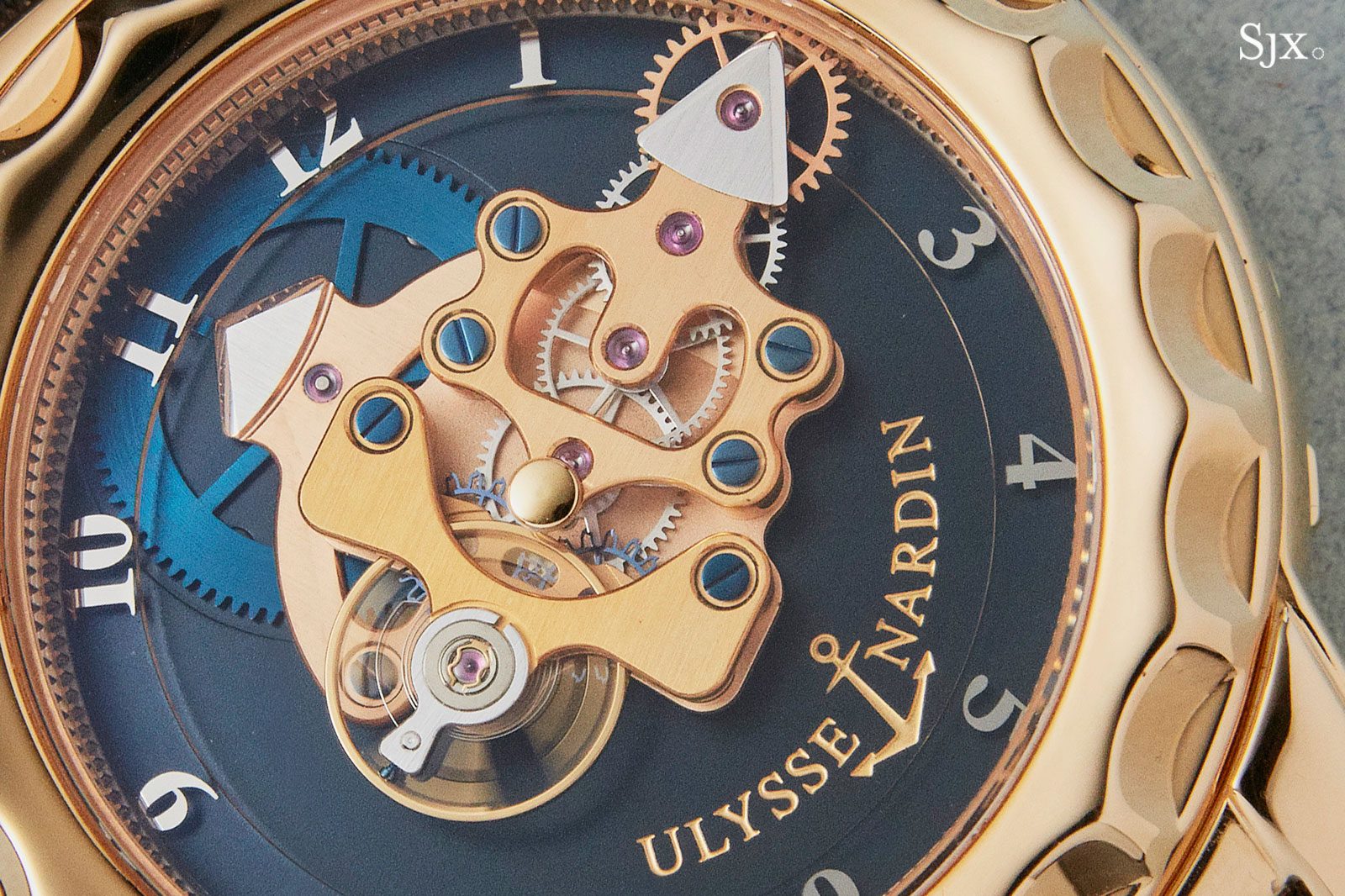
The early Freak featured an exotic double-wheel direct-impulse escapement that used silicon for the escape wheels; they can be seen in the image above. Note that these early models still relied on a metallic hairspring.
Adapting the Freak to wandering hours
The wandering satellite hours display of Urwerk is a perfect fit for the Freak for a few reasons. First, the display of the hours has always been a weakness of the Freak’s original design, consigned to second billing beneath the flying tourbillon. Urwerk’s design moves the hour display up onto the tourbillon itself, near the minutes scale, improving both legibility and conceptual harmony.
But mechanically, it’s a true Freak, meaning the carriage for the wandering hours display also carries the escapement, retaining the tourbillon functionality that is a critical piece of the Freak’s appeal. Unlike Urwerk’s own wandering hours watches, which are driven by the centre wheel cannon pinion of an otherwise ordinary architecture, the flow of power in the Freak works differently.
![]()
The massive tourbillon carriage is powered from its centre by the mainspring, which keeps the gear train in constant tension against a large fixed-ring gear around the periphery of the dial. The gear train transfers power from the edge of the movement to its centre, where the escapement is located. As the lever escapement locks and unlocks, the entire carriage rotates clockwise fractionally, walking its way around the dial once every three hours.
In other words, the wandering hours display of the UR-Freak is, in fact, a 180-minute tourbillon. It rotates at a third the speed of the regular Freak’s 60-minute rotation, because the Urwerk-style minutes scale takes up just one third of the dial. Over the long term, the difference is insignificant, since it still rotates the escapement through all vertical positions.
The Freak is often mistaken for a karrusel since it rotates so slowly and has more components than normal included in the carriage, but the presence of the fixed-ring gear makes it a textbook tourbillon. At the speed of an ordinary tourbillon, this much mass would be a non-starter; it would simply waste too much energy. But at this reduced speed, the UR-Freak achieves a very healthy 90-hour power reserve.
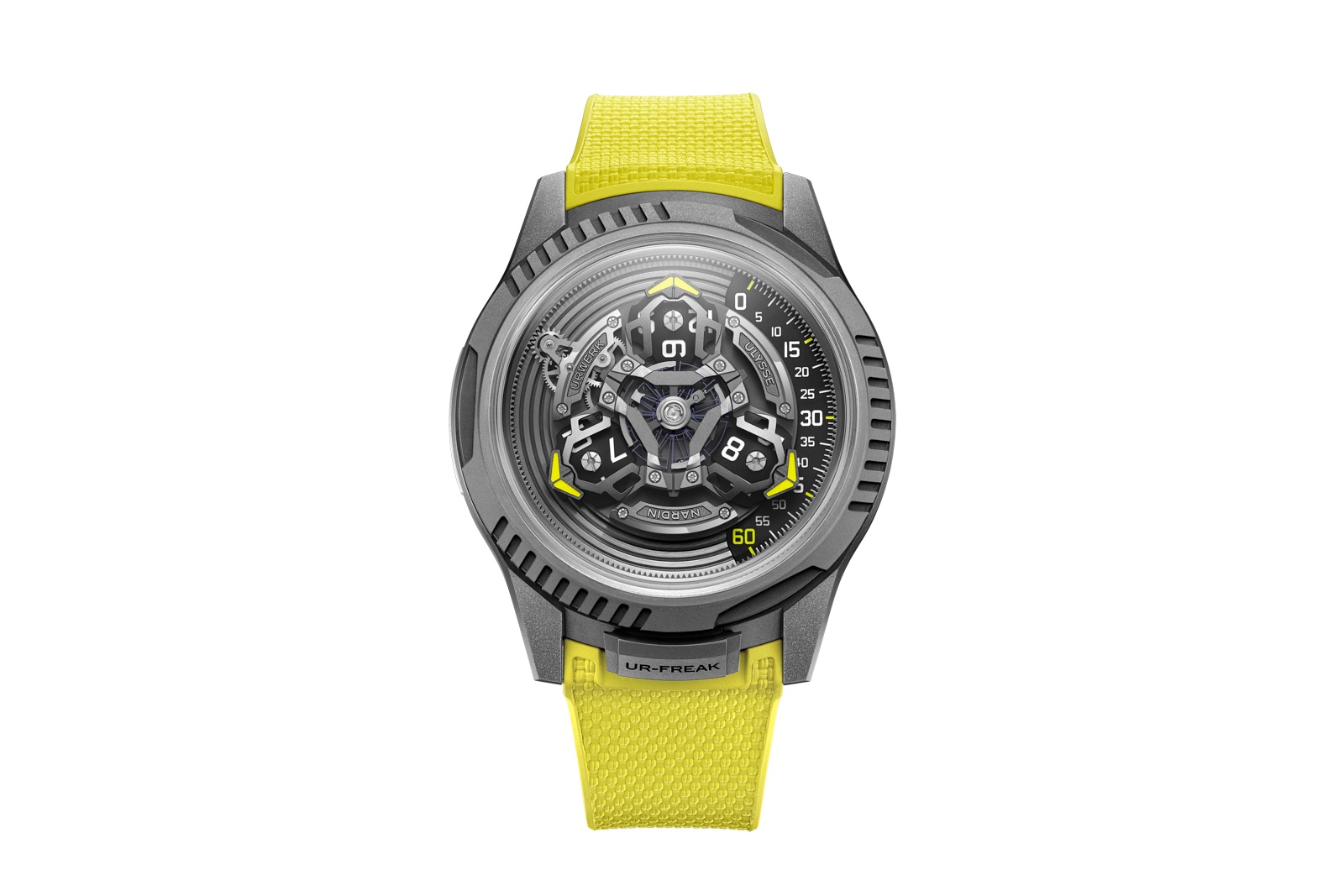
Inside the Freak
Urwerk’s own watchmaking tends to focus on its signature satellite wandering hours display; the brand usually prefers to leave the underlying base movement to suppliers. Ulysse Nardin has, at times throughout its history, utilised third party base movements as well, but in general the brand has earned its status as a true manufacture. The UN-241 that powers the UR-Freak is representative of the brand’s capabilities.

While the imprint of Urwerk is unmistakable, the UR-Freak is fundamentally a Ulysse Nardin product, made in-house in Le Locle, boasting the brand’s latest and greatest technology. This includes a diamond-coated silicon escape wheel and the brand’s own silicon hairspring that features an asymmetric terminal curve engineered to cancel out isochronal errors introduced by any eccentric breathing of the inner coils.
This is the kind of fundamental engineering we’re used to seeing from brands with big budgets and major industrial prowess, like Rolex and Patek Philippe. But Ulysse Nardin has earned its place in the big leagues with its prescient 2006 investment in Sigatec, which it part owns with the Acrotec group. With Sigatec in its corner, Ulysse Nardin has the ability to punch well above its weight when it comes to state-of-the-art silicon components.
The large central balance wheel ticks at 3 Hz, and is free-sprung to allow the proprietary hairspring to do its job. Throughout the escapement, the silicon components reduce inertia and help reduce friction. One of silicon’s great advantages over metallic components is its low coefficient of friction, a property that is enhanced with coatings like DIAMonSIL. While Ulysse Nardin chooses to lubricate its silicon escapements to increase acceleration of the balance, the components can theoretically function dry.
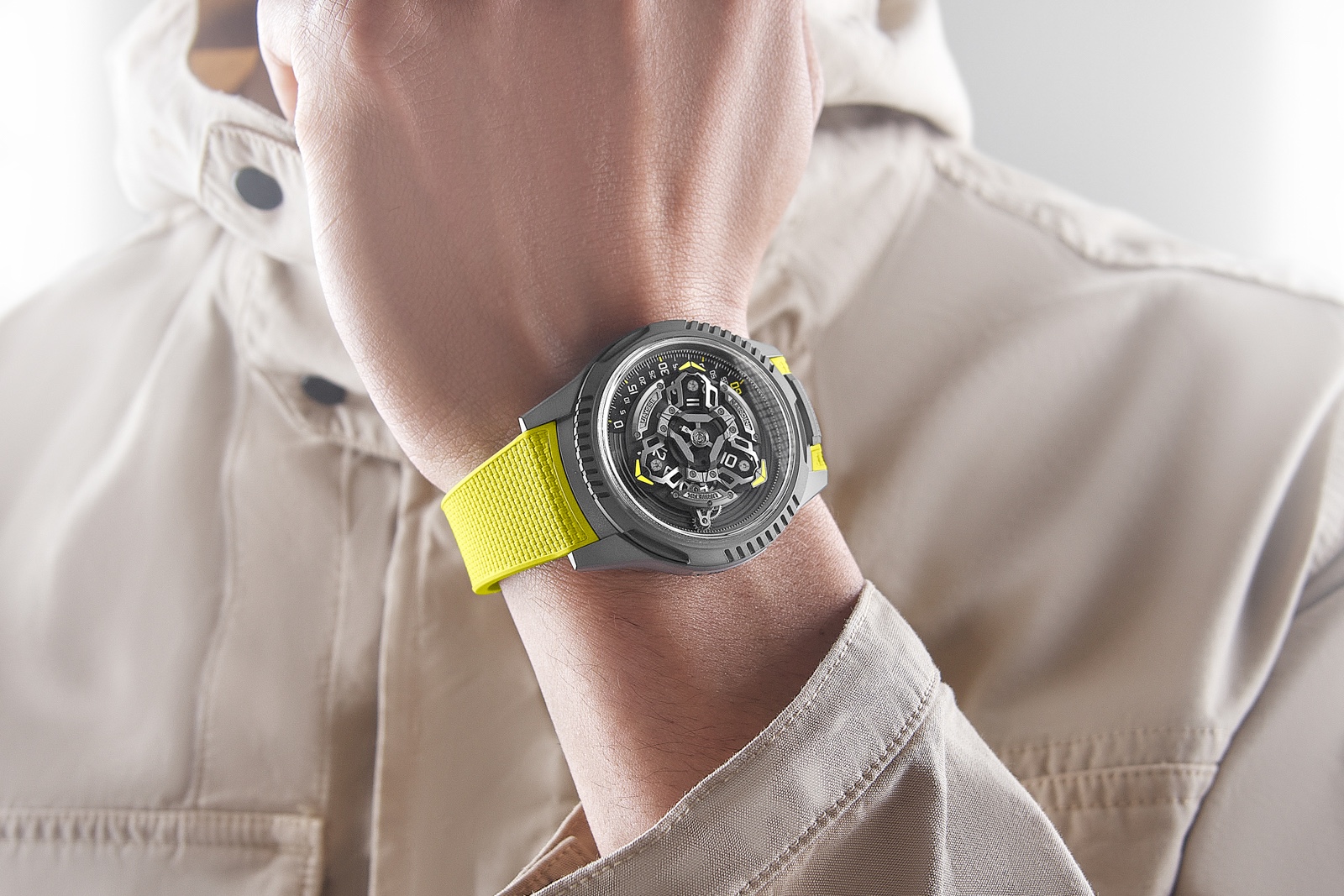
The influence of the Freak is also obvious from the back, which reveals the brand’s proprietary quad-pawl Grinder automatic winding system, which UN claims to be twice as efficient as a normal automatic winding system. Winding efficiency is notoriously difficult to define and measure, and the question of whether bi-directional winding is more or less efficient than uni-directional winding is apparently still unsettled.
Regardless, the Grinder system, which takes its name from the mechanical winches used on racing yachts, works a bit like a Seiko Magic Lever on steroids, with four compliant pawls that wind the mainspring, harnessing the rotor’s energy in both directions.

A sci-fi case
One of the things that makes the Freak special is the complete integration between the movement and case. The time is set by flipping a small lever (between the lugs at six) and rotating the bezel, and the movement can be manually wound by rotating the case back. The latter operation can be challenging on most Freaks, but the UR-Freak features ergonomic notches machined into the case back, which will no doubt make the watch easier to wind.

The machined notches appear on the bezel as well, and while they’re less functionally critical up top they suit the design; paired with the vivid yellow accents on the dial and matching yellow rubber strap, the design feels fresh and futuristic.
The case itself is on the larger sided at 44 mm, but as with many variations of the Freak, the size is put to good use. An at just 12 mm in height, it’s a good deal slimmer than some of the other recent editions like the Freak S Enamel. The surface of the case is heavily sandblasted, resulting in a pleasing matte finish that suits the aggressive, industrial look.
Key facts and price
Ulysse Nardin UR-Freak
Ref. 2413-500LE-2A-UR/3B
Diameter: 44 mm
Height: 12 mm
Material: Titanium
Crystal: Sapphire
Water resistance: 30 m
Movement: UN-241
Functions: Hours and minutes
Winding: Automatic
Frequency: 21,600 vibrations per hour (3 Hz)
Power reserve: 90 hours
Strap: Rubber strap with titanium folding clasp
Limited edition: Yes, 100 pieces
Availability: At select retail partners common to Ulysse Nardin and Urwerk
Price: CHF100,000 excluding taxes
For more, visit Ulysse-nardin.com
This was brought to you in partnership with Ulysse Nardin.
Back to top.

